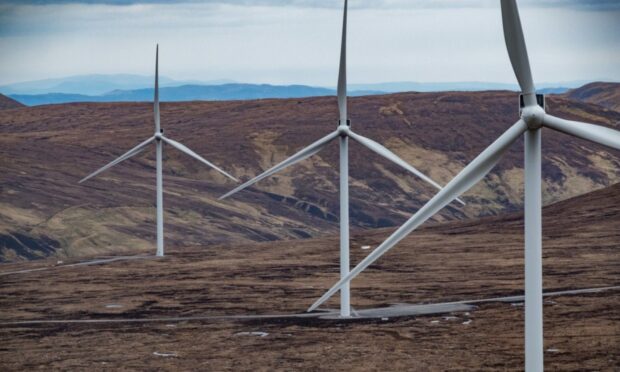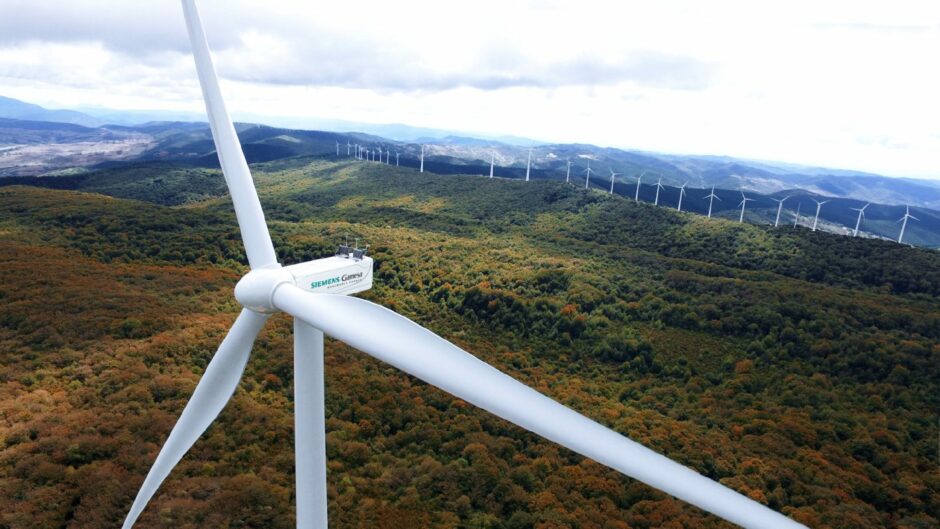Aberdeen environmental consultancy SEM has helped create a method for extracting more value from decommissioned wind turbines.
Hailed as a potential sustainability boost for the renewables and manufacturing sectors, it is hoped the new technology will pave the way for rare metals to be extracted from waste alloys.
These could then be combined with steel, helping to improve the strength and stability of high-impact machinery.
Rare metals typically mined overseas
Funded by the Industrial Biotechnology Innovation Centre (IBioIC), a networking and support organisation that connects industry, academia and government to bring biotechnology processes and products to the global market, the process is being developed by Bridge of Don-based SEM and researchers from Edinburgh University.
Rare metals – like niobium, tantalum and rhenium – are typically mined overseas using damaging environmental methods.
But by recovering them from old wind turbines, of which there are a growing number around Scotland, manufacturers could create new metals without the need for imports.
As it stands, there is no option for extracting these rare metals in the UK.
Firms must send waste to one of the only existing facilities in Canada for processing.
But that may be about to change after the SEM-Edinburgh University initiative developed a process for extracting rare metals in a sustainable way.
Ageing infrastructure ‘could be reused’
SEM lead scientist Leigh Cassidy said: “Metals like niobium, tantalum and rhenium are essential for the integrity of steel-based components commonly used in wind turbines and other high-temperature engines.
“But most of the stocks are still mined from the earth. Meanwhile, we have ageing infrastructure coming to the end of its lifecycle and substantial amounts of these rare metals – which could be reused.”
She added: “We have already worked with the University of Edinburgh on methods for safely extracting metals from waste electronics and saw an opportunity to explore a similar technique for separating the different metals in alloys.
“If used at scale, this type of process could be a big boost for UK manufacturing and unlock a new sustainable, circular supply chain, where rare metals are recovered from existing alloys. Only small quantities of these rare metals are obtained as a result of the destructive mining processes, but with a process like this adopted at scale, there should be no need to cause additional harm to the planet.”
Collaboration ‘certainly played a key role’
Ms Cassidy continued: “We are proud of the success achieved in this project and collaboration certainly played a key role. The project has contributed to the company’s mission of turning waste into value by focusing on resource recovery.
“We’re excited to continue exploring ways to collaborate with others and further advance solutions that showcase the art of the possible for industries looking to build upon sustainable processes.”
SEM’s ‘potentially game-changing’ technology
SEM’s Dram technology uses by-products from the distillation of malt whisky and was initially developed to safely extract valuable metals from waste electronics.
IBioIC business engagement director Liz Fletcher said: “SEM is a great example of a business taking a bio-based process and applying it to multiple sectors to help companies achieve environmental goals. By joining forces with academic experts, SEM has developed potentially game-changing processes for sustainably treating various types of waste. Recycling at an industrial scale will be key to achieving net-zero, while also reducing the carbon footprint and environmental damage associated with imported raw materials.”



Conversation